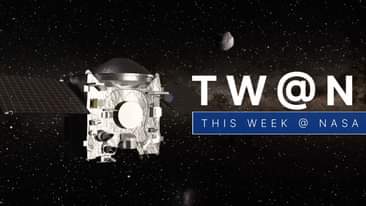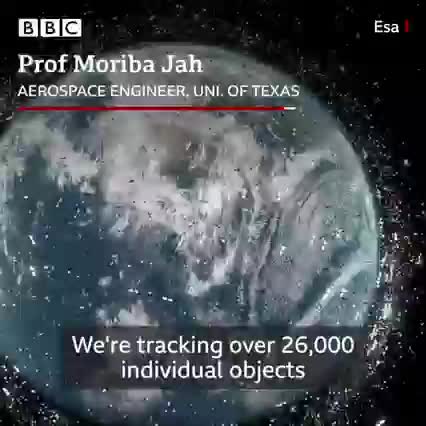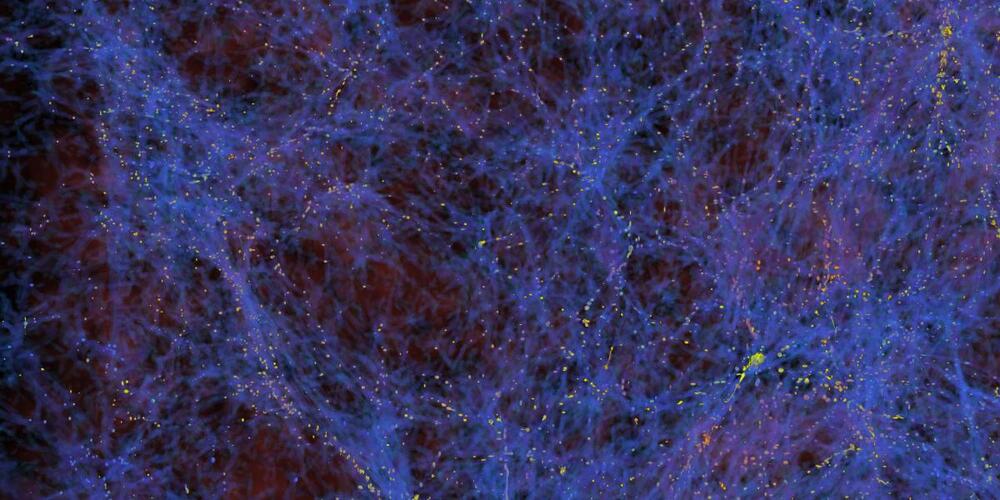Click on photo to start video.
With Mars Oxygen In-Situ Resource Utilization Experiment, also known as MOXIE, the high-tech instrument converts carbon dioxide in the Mars atmosphere and convert it into oxygen.


It’s been a busy week!
🚀 Samples of a 4.5-billion-year asteroid head to Earth on our #OSIRISRex mission.
🔭 NASA’s James Webb Space Telescope checks off a key prelaunch milestone.
⛈️ Scientists develop a way to view satellite data in 3D to gain a better understanding of severe weather.
Watch This Week at NASA for details on these stories and more: youtu.be/mplLzUMYKuM

China’s Mars rover Zhu Rong successfully landed on the red planet after “nine minutes of terror”.
Read the full report: https://sc.mp/504e


Our recent look at the possibility of technosignatures at Alpha Centauri is now supplemented with a new study on the detectability of artificial lights on Proxima Centauri b. The planet is in the habitable zone, roughly similar in mass to the Earth, and of course, it orbits the nearest star, making it a world we can hope to learn a great deal more about as new instruments come online. The James Webb Space Telescope is certainly one of these, but the new work also points to LUVOIR (Large UV/Optical/IR Surveyor), a multi-wavelength space-based observatory with possible launch in 2035.
Authors Elisa Tabor (Stanford University) and Avi Loeb (Harvard) point out that a (presumably) tidally locked planet with a permanent nightside would need artificial lighting to support a technological culture. As we saw in Brian Lacki’s presentation at Breakthrough Discuss (see Alpha Centauri and the Search for Technosignatures), coincident epochs for civilizations developing around neighboring stars are highly unlikely, making this the longest of longshots. On the other hand, a civilization arising elsewhere could be detectable through its artifacts on worlds it has chosen to study.
We learn by asking questions and looking at data. In this case, asking how we would detect artificial light on Proxima b involves factoring in the planet’s radius, which is on the order of 1.3 Earth radii (1.3 R⊕) as well as that of Proxima Centauri itself, which is 0.14 that of the Sun (0.14 R⊙). We also know the planet is in an 11 day orbit at 0.05 AU. Other factors influencing its lightcurve would be its albedo and orbital inclination. Tabor and Loeb use recent work on Proxima Centauri c’s inclination (citation below) to ballpark an orbital inclination for the inner world.

Astronomers have long predicted that deep beneath Neptune’s thick blue clouds lies a super-hot body of water that, despite its high temperature, never boils because of its incredibly high-pressure atmosphere. Uranus, another planet in the outer solar system of similar size and composition, is also believed to have a similar water-rich interior. Unfortunately, due to their distances from Earth, it is hard to directly probe these two planets to test our assumption. But scientists have found novel ways of testing their theories about these ice giants from Earth.
As described in a newly-published study from Nature Astronomy, scientists recreated the pressure and temperature of the interiors of Neptune and Uranus in a lab. The aim of the experiments was to test hypotheses about the chemistry of the deep water within these planets. But the study could have additional implications for what we know about potentially habitable planets in other solar systems.
“We were seeking to extend our knowledge of the deep interior of ice giants and determine what water-rock interactions at extreme conditions might exist,” said lead author Taehyun Kim, of Yonsei University in South Korea. “Ice giants and some exoplanets have very deep water layers, unlike terrestrial planets. We proposed the possibility of an atomic-scale mixing of two of the planet-building materials (water and rock) in the interiors of ice giants.”

Circa 2020
Learn how a young team of additive manufacturing engineers helped bring 3D printed parts to the design of the GE9X, the world’s largest jet engine.
Stefka Petkova enjoys building things. It’s a passion she’s had since she was a small child when her dad, an electrician who liked to work on cars, kept the door to his workshop open. “I was exposed to that as a very young child and just got a lot of encouragement,” says Petkova, who she spent many afternoons watching him weld and wire automobiles.
Her childhood tinkering led her to study mechanical engineering at the University of North Florida, near America’s Space Coast, where she joined the school’s space club. She traveled with the club to Cocoa Beach to watch the liftoff of Space Shuttle Atlantis in 2011, NASA’s final flight in its Space Shuttle Program. “At the Atlantis launch, we were able to go in the overhaul facility, touch the space tiles protecting the shuttles and talk to the engineers,” she says. “It was an amazing experience.”


The continued growth of wireless and cellular data traffic relies heavily on light waves. Microwave photonics is the field of technology that is dedicated to the distribution and processing of electrical information signals using optical means. Compared with traditional solutions based on electronics alone, microwave photonic systems can handle massive amounts of data. Therefore, microwave photonics has become increasingly important as part of 5G cellular networks and beyond. A primary task of microwave photonics is the realization of narrowband filters: The selection of specific data, at specific frequencies, out of immense volumes that are carried over light.
Many microwave photonic systems are built of discrete, separate components and long optical fiber paths. However, the cost, size, power consumption and production volume requirements of advanced networks call for a new generation of microwave photonic systems that are realized on a chip. Integrated microwave photonic filters, particularly in silicon, are highly sought after. There is, however, a fundamental challenge: Narrowband filters require that signals are delayed for comparatively long durations as part of their processing.
“Since the speed of light is so fast,” says Prof. Avi Zadok from Bar-Ilan University, Israel, “we run out of chip space before the necessary delays are accommodated. The required delays may reach over 100 nanoseconds. Such delays may appear to be short considering daily experience; however, the optical paths that support them are over ten meters long. We cannot possibly fit such long paths as part of a silicon chip. Even if we could somehow fold over that many meters in a certain layout, the extent of optical power losses to go along with it would be prohibitive.”

Circa 2020
Astronomers have found one of the largest structures in the known universe—a “wall” of galaxies that’s at least 1.4 billion light-years long. And given how close it is to us, it’s remarkable that we haven’t seen it before now.
What happened: An international team of scientists reported the discovery of the South Pole Wall in a paper published Thursday in the Astrophysical Journal. The structure is basically a curtain that stretches across the southern border of the universe (from the perspective of Earth) and consists of thousands of galaxies, along with huge amounts of gas and dust.
What do you mean by “wall”? Galaxies aren’t just strewn randomly throughout the universe. Along huge strands of hydrogen, galaxies collect into larger groupings of massive filaments, separated by giant voids of nearly empty space. Each filament is basically a wall of galaxies, stretching for hundreds of millions of light-years. They’re the biggest structures in the known universe. Other identified structures include the Great Wall, the Sloan Great Wall, the Hercules-Corona Borealis Great Wall, and the Bootes Void.